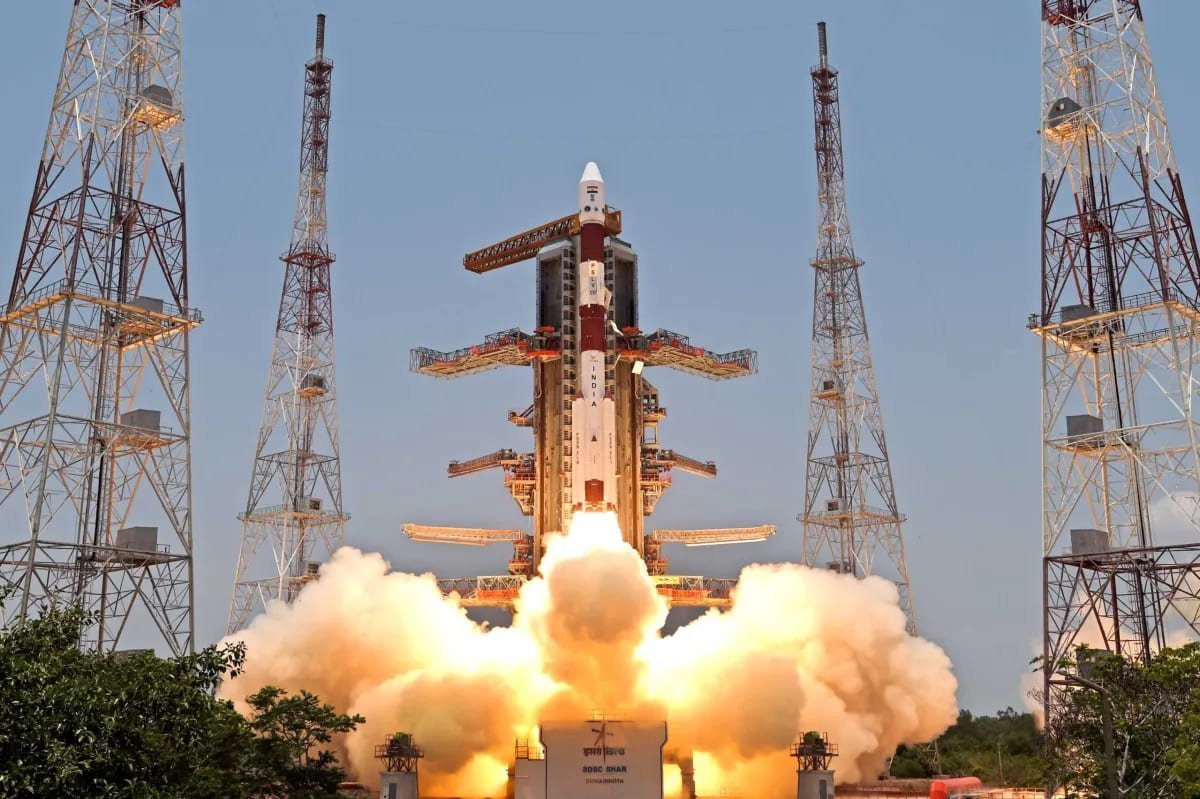
India’s Aditya-L1 sun mission reaches solar orbit
Launched in September, the solar observation mission is set to conduct an extensive examination of the sun.
India has achieved a significant milestone in space exploration as its solar observation mission successfully entered the sun’s orbit following a four-month journey.
Launched in September, the Aditya-L1 mission by the Indian Space Research Organisation (ISRO) is equipped with various instruments to measure and observe the sun’s outer layers.
Prime Minister Narendra Modi praised the accomplishment, stating it marks another landmark for India and acknowledges the relentless dedication of the nation’s scientists in undertaking complex space missions.
According to India’s science and technology minister, Jitendra Singh, the probe has reached its final orbit, where it aims to unravel the mysteries of the Sun-Earth connection. Positioned at Lagrange Point 1, the spacecraft will conduct an extensive study of the sun, with a specific focus on the solar corona and its impact on space weather.
Covering a distance of approximately 1.5 million kilometers over four months, the satellite’s journey is only a small fraction of the Earth-sun distance of 150 million kilometers.
Named after the Hindi word for the sun, this mission follows India’s previous success in landing on the moon’s south pole with the Chandrayaan-3 mission in August of last year.
Scientists involved in the Aditya-L1 project aim to gain insights into the effects of solar radiation on the increasing number of satellites in orbit, with a particular focus on phenomena affecting projects like Elon Musk’s Starlink communications network.
ISRO Chairman S Somanath expressed anticipation for scientific outcomes in the coming days, highlighting the importance of understanding the sun, which plays a crucial role in controlling space weather. The mission is expected to have a lifespan of at least five years, given the remaining fuel in the satellite.
ISRO has been actively sharing updates on the mission’s progress through posts on X.
While other countries, including the United States and the European Space Agency, have sent probes to explore the solar system’s center, India’s Aditya-L1 mission distinguishes itself as the first from any Asian nation to be placed in orbit around the sun.

Science
Why the Moon Turns Red: The Science Behind the Lunar Eclipse
On September 7, skywatchers across Asia, Africa, and Europe looked up to see the Moon slip from silver to dramatic red—a spectacular display that’s as much about Earth as it is about the Moon. Here’s why our Moon turns crimson every time a total lunar eclipse paints the sky.
What Actually Happens During a Total Lunar Eclipse?
A lunar eclipse occurs when the Earth moves precisely between the Sun and the Moon. While you might expect the Moon to disappear completely as it slips into Earth’s shadow, something far more beautiful happens: the Moon glows a deep red or orange, often called a “blood moon”.
This isn’t a rare magic trick. Lunar eclipses are a regular part of skywatching, but total eclipses—where the whole Moon is covered—are less common, occurring only a couple of times each year. The eclipse on September 7, 2025, is particularly notable for its long totality of 82 minutes and global visibility.
Why Does the Moon Look Red Instead of Black?
You’d think that when Earth blocks the Sun, the Moon would go entirely dark. Instead, it glows a haunting, coppery red. The explanation is pure science and a little bit of planetary teamwork.
Earth’s Atmosphere Is the Secret Ingredient
As the Moon passes through the darkest part of Earth’s shadow—called the umbra—the only sunlight that reaches the Moon has traveled through Earth’s atmosphere first. This journey bends and filters the light, removing the shorter blue wavelengths and letting through the longer red and orange wavelengths.

In other words, sunlight passes through a “ring” of Earth’s air. The bluer, shorter rays scatter (the same phenomenon that colors our daytime sky blue and sunsets orange/red), whereas the redder rays bend around the globe and spill onto the Moon’s surface. That’s why people all over the world see the Moon glowing red during the eclipse—it’s lit by every sunrise and sunset on Earth, all at once.
The Science: Rayleigh Scattering and Blood Moons
This filtering process is known as Rayleigh scattering—the same effect that gives us blue skies and those stunning red sunsets. When the Moon is inside the umbra, it catches sunlight that’s been bent through mammoth slabs of our planet’s air, with all the blue stripped out and only red and orange left to paint the lunar surface.
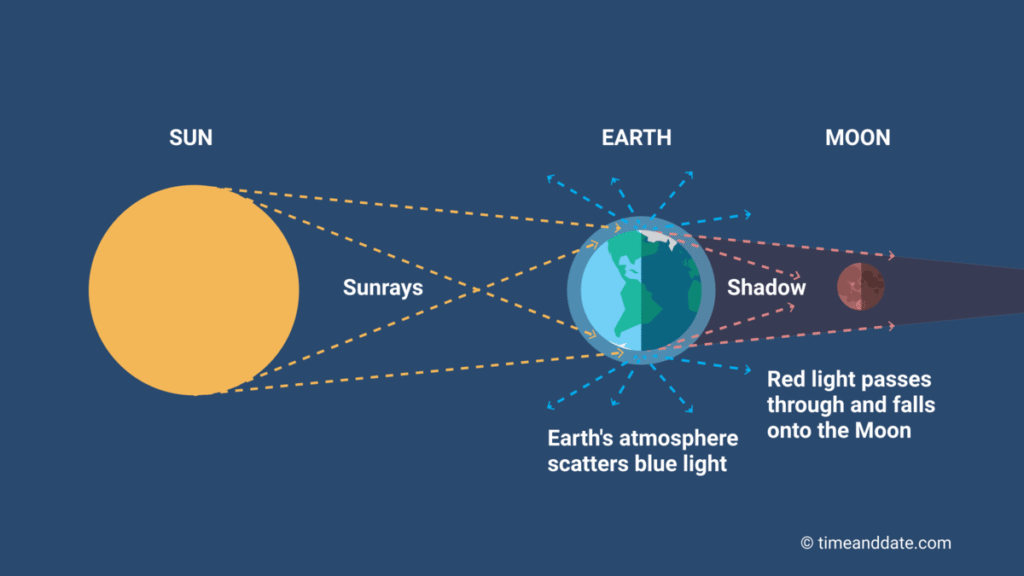
The term “blood moon” is popular, but not scientific. It’s just a poetic way of describing the result of this beautiful atmospheric chemistry.
Why the Color Varies Each Eclipse
Not every lunar eclipse looks the same. Sometimes the Moon shows a brighter orange; other times, it’s a dark rusty red. Volcanoes, wildfires, dust storms, and even local weather can all affect the clarity and color of the Earth’s shadow. For example, after a major volcanic eruption, there’s so much dust in the air that the Moon can appear an eerie, deep red or even brown.
A Universal Story in the Night Sky
One of the coolest things about a lunar eclipse is that it’s safe to watch with the naked eye—no fancy glasses needed! The next time you see the Moon turning red, remember: you’re looking at sunlight that’s passed through every sunrise and sunset on the planet, refracted and projected 380,000 km onto the Moon’s surface.
Fun Fact: If you were standing on the Moon during the eclipse, you’d see a ring of red light outlining Earth—a sight of all the sunsets and sunrises happening at that moment.
Science
September Skywatch: Preview of All Celestial Highlights
Stock up on coffee, dust off those binoculars, and set your alarm—September’s sky calendar is absolutely stacked, and some of these events won’t come around again for years.
If you’re the kind of person who looks up at night just in case something magical’s happening, September is about to be your month. For seasoned stargazers, casual phone photographers, and everyone who’s just curious about what’s actually up there, here’s your guide to the most unmissable celestial events in September 2025.
Let’s face it: after a wild summer, we could all use a reason to stand outside at midnight and remember how cool the universe really is.
September’s Top Sky Events (Mark Your Calendar!)
Total Lunar Eclipse — September 7

Call your friends, grab your favorite snacks—this is the big one. On the 7th, India and much of Asia will get a front-row seat to a total lunar eclipse. The best part? It’s happening at a comfortable evening hour for most of us. The moon will turn that classic coppery “blood moon” red, and you don’t need any fancy gear—just clear skies and maybe a pair of binoculars to see craters in vivid detail. Don’t forget to make a wish. (I always do. Can’t prove it works, but hey—what if?)
- Peak Time (India): Around 8:45 PM IST
- How to Watch: Find a dark spot, give yourself about 30 minutes to adjust your eyes, and look up!
- Photographer Tip: Set your phone on Night Mode, brace against a wall, and you’ll get surprisingly good shots.
The Pleiades & A Rare Lunar Occultation — September 12
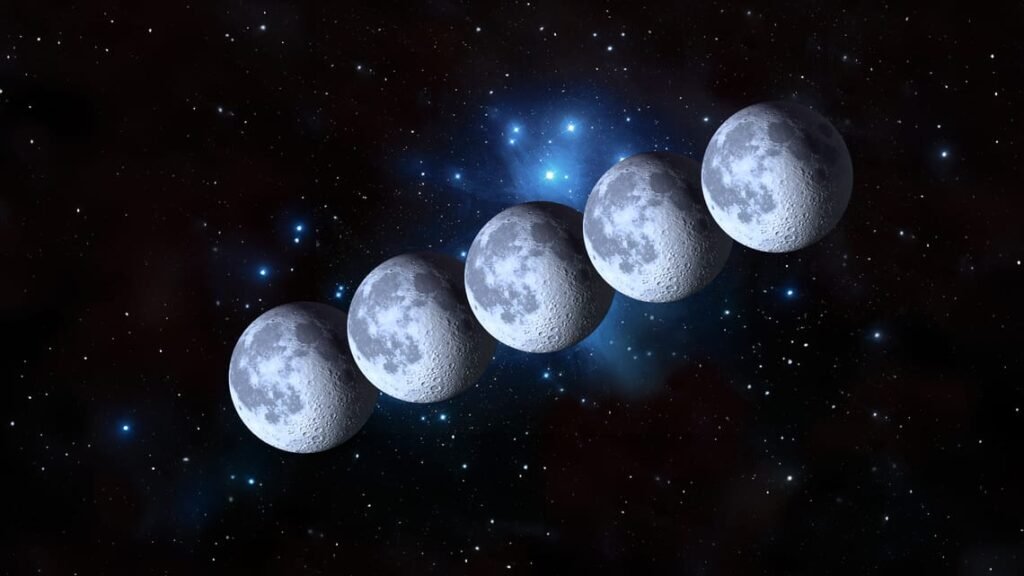
Star lore fans and night owls, this one’s for you. The Pleiades, often called the Seven Sisters, are a beautiful open star cluster in Taurus. On the night of the 12th, the moon will pass directly in front of (or “occult”) them. It’s a subtle, magical event that looks stunning through binoculars.
- Peak Time: Roughly 10-11 PM IST
- Where to Look: Towards the eastern sky, after moonrise
- Why It Matters: Lunar occultations of the Pleiades are rare and mesmerizing, like the universe is showing off just for you.
Saturn at Opposition — September 21
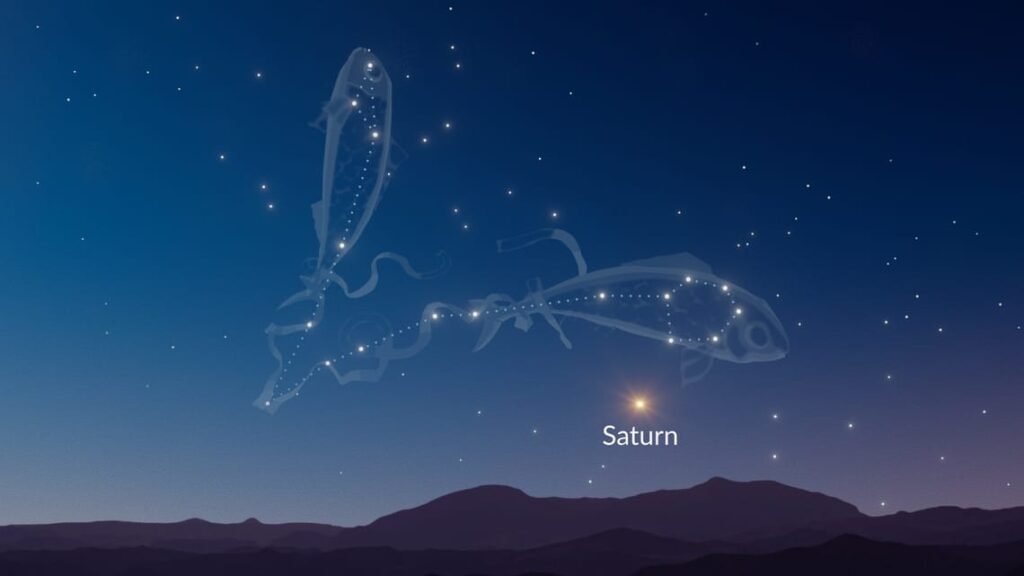
Saturn lovers, this is your night. When a planet’s at “opposition,” it’s closest to Earth and shines brightest for the year. Saturn will rise with the sun setting and is visible all night long—big, bright, and ringed. Even a small telescope or powerful binoculars should let you glimpse the rings, which never gets old.
- Pro Tip: Point your phone camera through the telescope eyepiece for easy astro-photography.
- Bonus: Look for Titan, Saturn’s largest moon, as a small pinprick of light nearby.
Equinox & Changing Seasons — September 23
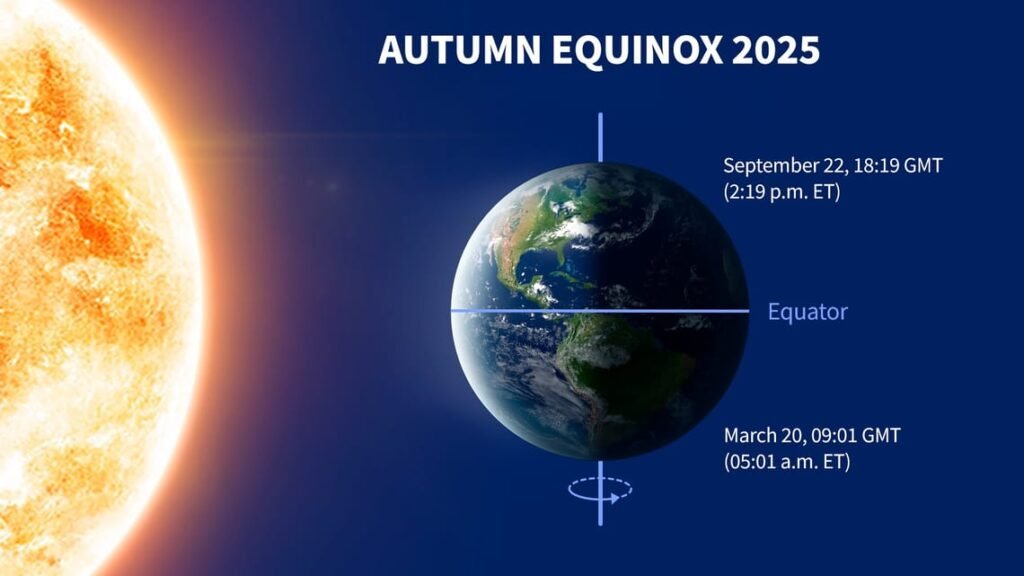
Not as “wow” visually, but astronomically important. The autumnal equinox is when day and night are (basically) equal length all over the world. In India, this means the end of the rainy season and slightly cooler nights. The Milky Way is still visible overhead in the early evening, especially if you can get away from city lights.
Other Stealthy Sky Attractions
- Pre-dawn Venus: The “Morning Star” will be dazzling before sunrise all month.
- Orionids Meteor Shower (Early Preview): The real peak is in October, but you might spot a few early stragglers after midnight in the last week of September.
- ISS Flyovers: Check an app like Heavens-Above for when the International Space Station passes overhead—it moves fast and looks like a bright, steady “star” gliding by.
Pro Tips for First-Time Skywatchers
- App Up: Download a free sky map app (like Stellarium or SkySafari) and point your phone at the sky to ID stars and planets instantly.
- Red Flashlight: Use red cellophane on your torch if you’re night-watching; red light won’t wreck your night vision.
- Safety First: If you’re heading outside late, go with a friend and tell someone where you’re going. Snacks are highly recommended. 😉
- Photo Challenge: Tag your best snaps #SeptemberSkyWatch—there’s always a community eager to geek out with you.
Why September 2025 Is Special
Celestial events come in cycles, but combos like a total lunar eclipse and a rare star occultation in the same month? That’s a treat. Whether you’re making it a solo adventure, a family activity, or a date, September’s sky show has a little something for everyone.
In a world full of distractions, looking up is still the best kind of reset.
Let me know if you catch something amazing—or if you just want to share a blurry moon photo (we’ve all been there). Clear skies!
Space
World’s First Wooden Satellite Launched into Space
Aim is to Test Space-Ready Timber for Future Mission.

Art: KyotoU/Gakuji Tobiyama
In a groundbreaking achievement, scientists have launched the world’s first wooden satellite into space to explore the material’s suitability for orbit. Named LignoSat, derived from the Latin for “wood,” the satellite was sent into space on a SpaceX mission to the International Space Station (ISS) on Monday. It will later be deployed into orbit, where researchers will observe how the wood withstands the extreme conditions of space over a period of six months.
The initiative, a collaboration between Kyoto University and Sumitomo Forestry, began in 2020. In 2022, they conducted exposure tests aboard the ISS for over 240 days, ultimately selecting Hoonoki, a type of Magnolia wood known for its strength, stability, and workability. This wood is traditionally used in Japan for crafting sword sheaths due to its shatter-resistant properties, according to Reuters.
Since space is devoid of water and oxygen, the wood is shielded from fire and decay, Kyoto University scientists explain. Additionally, they will evaluate the wood’s potential to protect semiconductors from space radiation, Reuters reports.
“If our wooden satellite succeeds, we plan to propose it to Elon Musk’s SpaceX,” said Takao Doi, an astronaut and professor at Kyoto University. The team envisions that wooden satellites could reduce space pollution, as they would not emit aluminum oxide when burning up upon re-entry, unlike traditional metal satellites. Over the next 50 years, Doi’s team envisions growing wood for timber-based habitats on the Moon and Mars. “With timber, a material we can cultivate ourselves, we could construct homes and sustain life in space indefinitely,” Doi told Reuters.
-
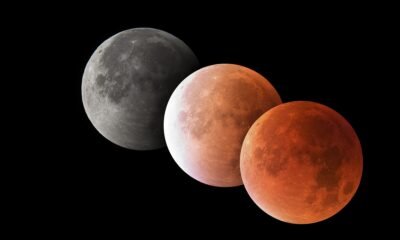
 Science1 month ago
Science1 month agoWhy the Moon Turns Red: The Science Behind the Lunar Eclipse
-
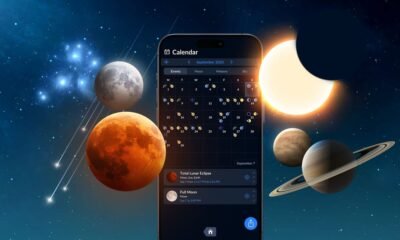
 Science2 months ago
Science2 months agoSeptember Skywatch: Preview of All Celestial Highlights
-

 Science1 month ago
Science1 month agoHimachal Pradesh Declares Disaster Emergency: What Science Tells Us About the Himalayan Climate Crisis
-

 Tech News1 month ago
Tech News1 month agoiPhone 17 Pricing Shock: India Faces Steepest Price Increases in Apple History
-

 Tech News1 month ago
Tech News1 month agoUS Revokes TSMC’s Fast-Track China Export Status as Chip War Escalates
-

 Tech News1 month ago
Tech News1 month agoAnthropic Raises Massive $13 Billion at $183 Billion Valuation
-

 Tech News1 month ago
Tech News1 month agoMicrosoft Breaks Free: Launches First In-House AI Models to Challenge OpenAI Partnership
-

 Tech News1 month ago
Tech News1 month agoRed Sea Cable Cuts Cripple Microsoft Azure, Disrupt 17% of Global Internet Traffic










